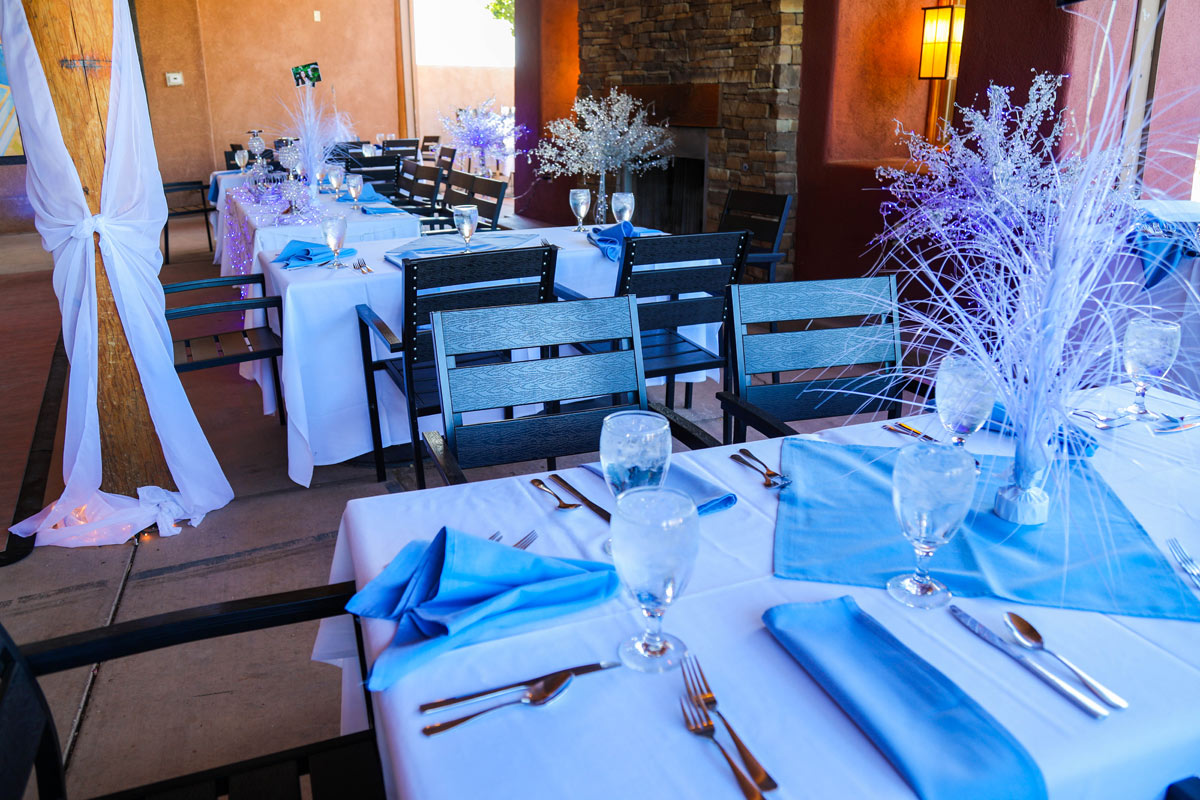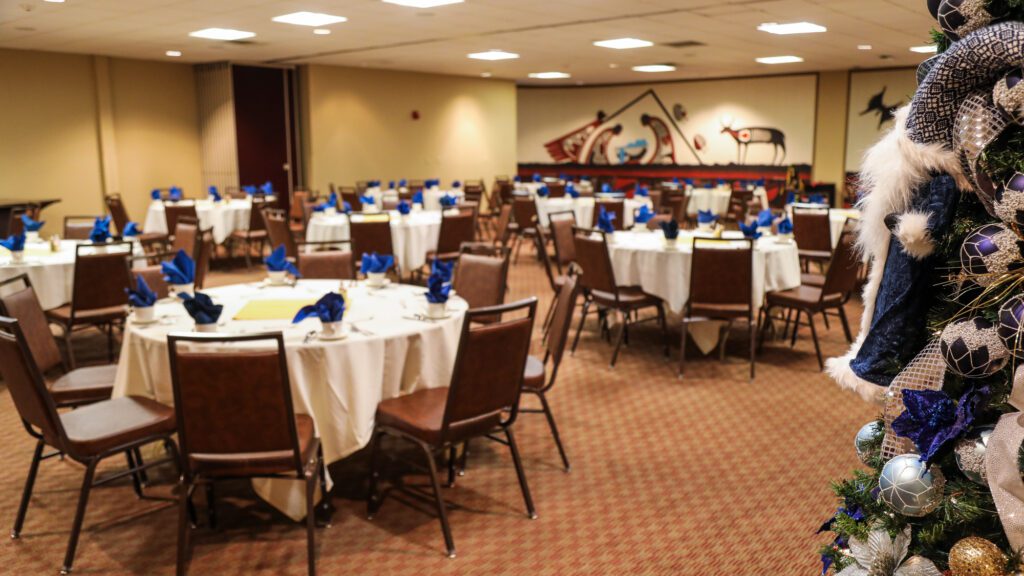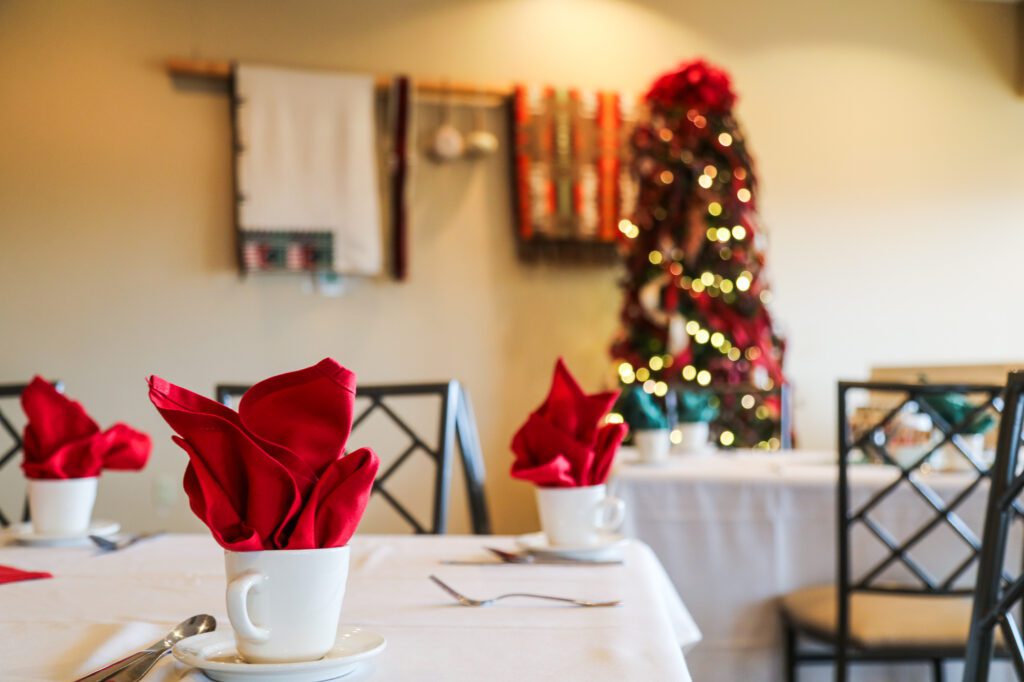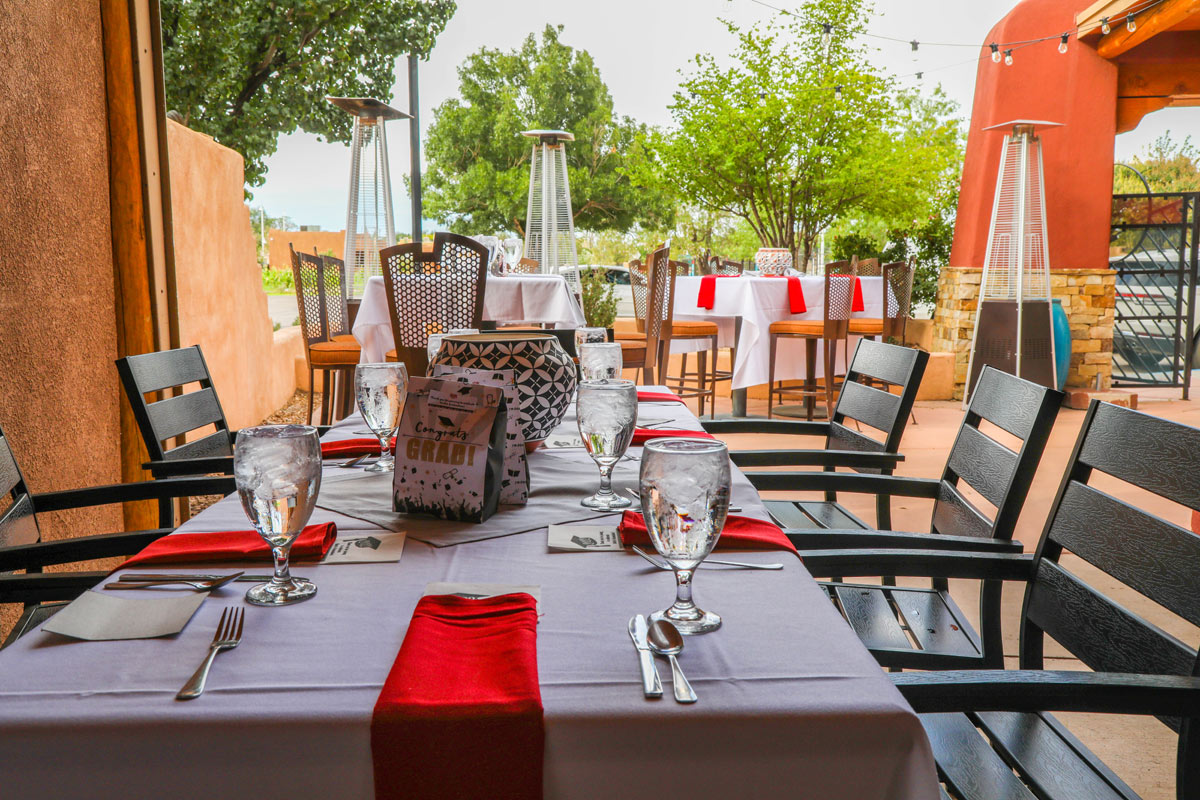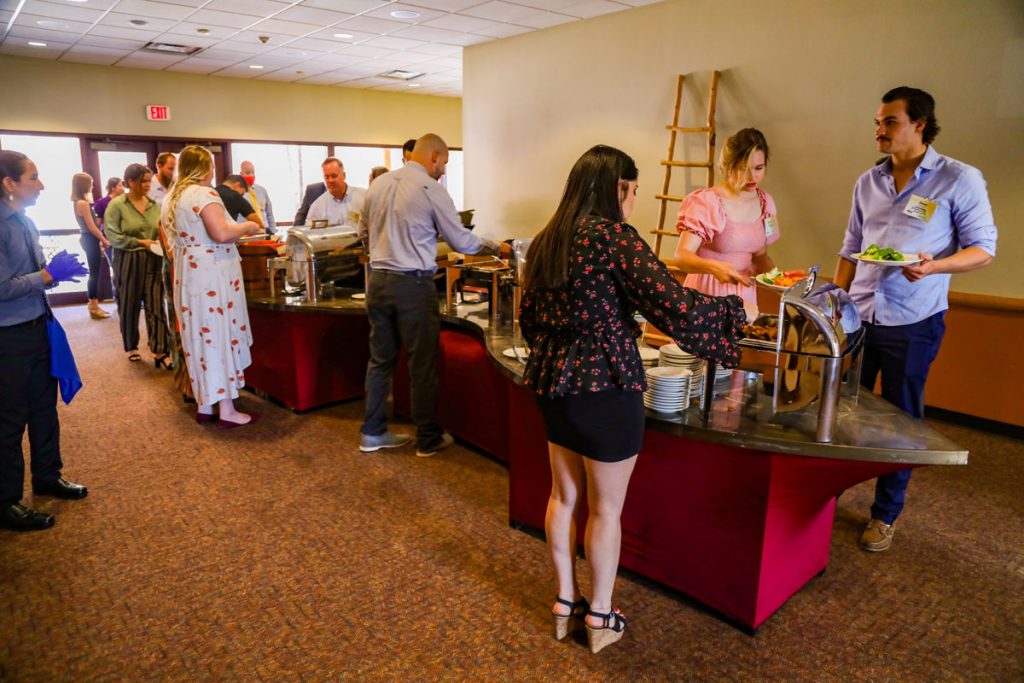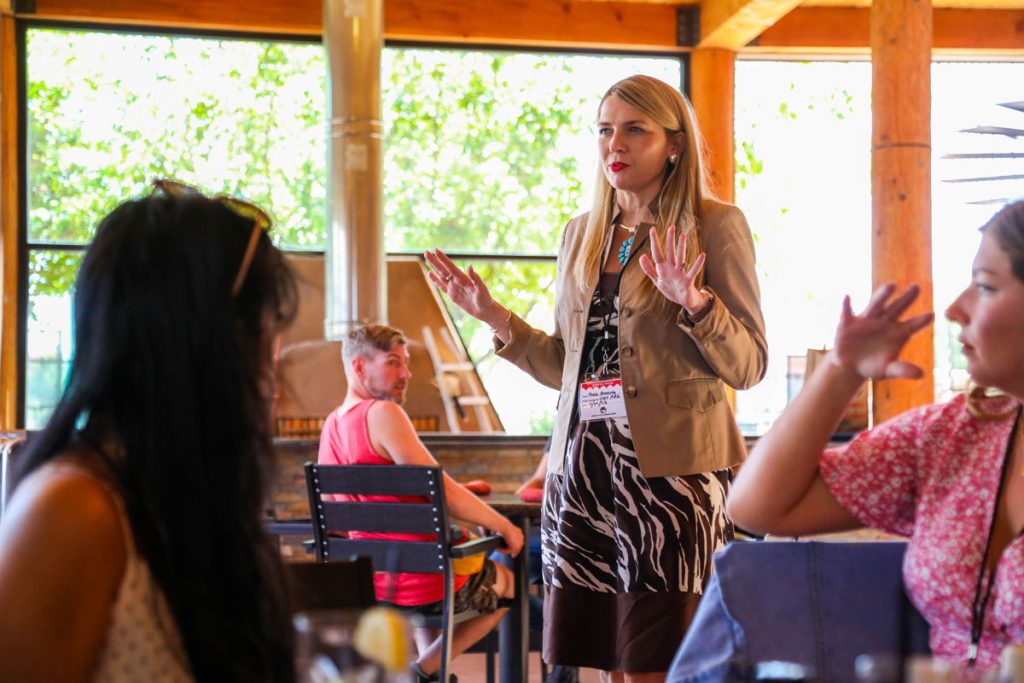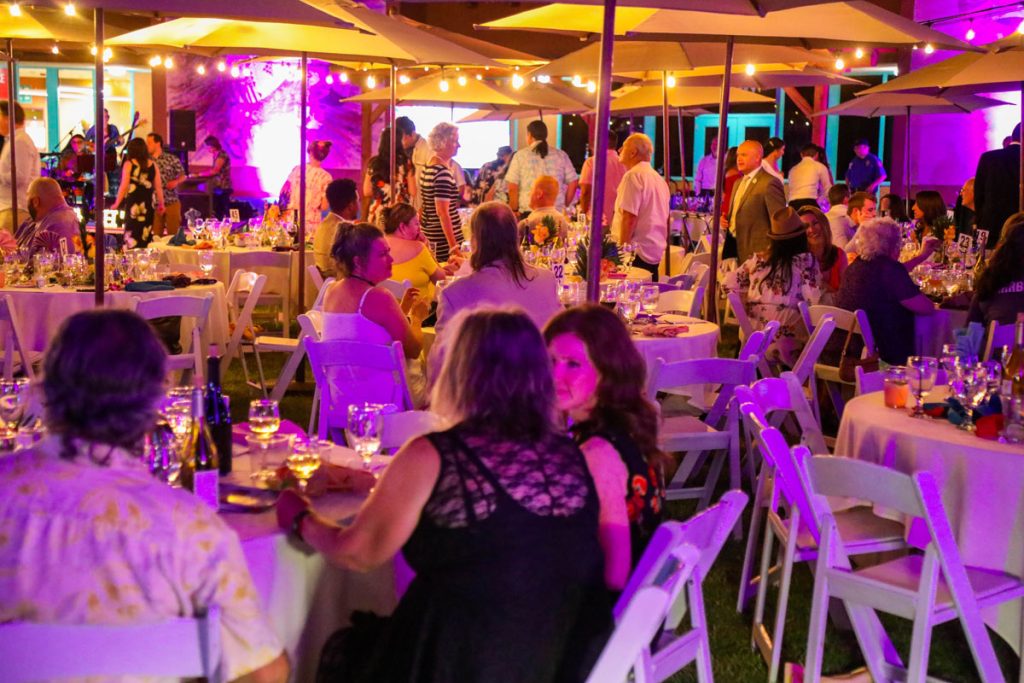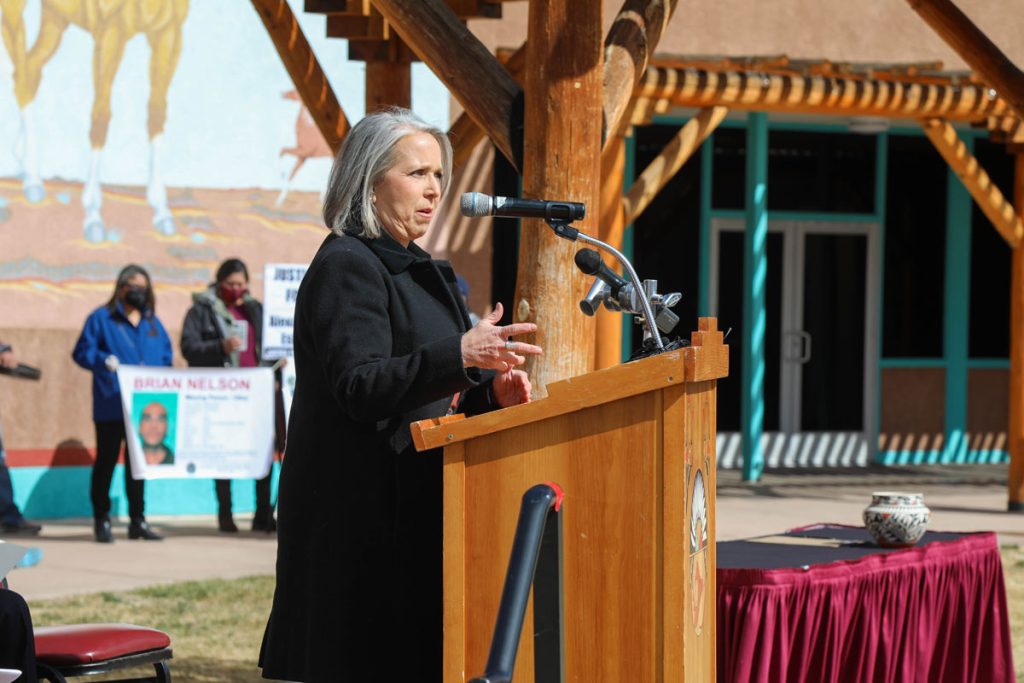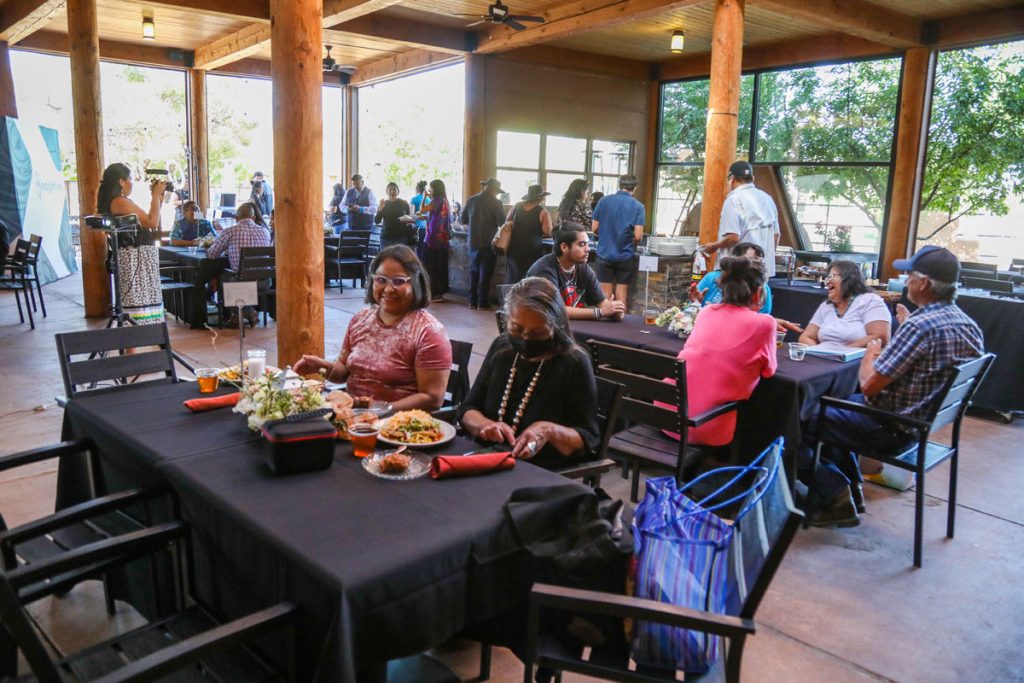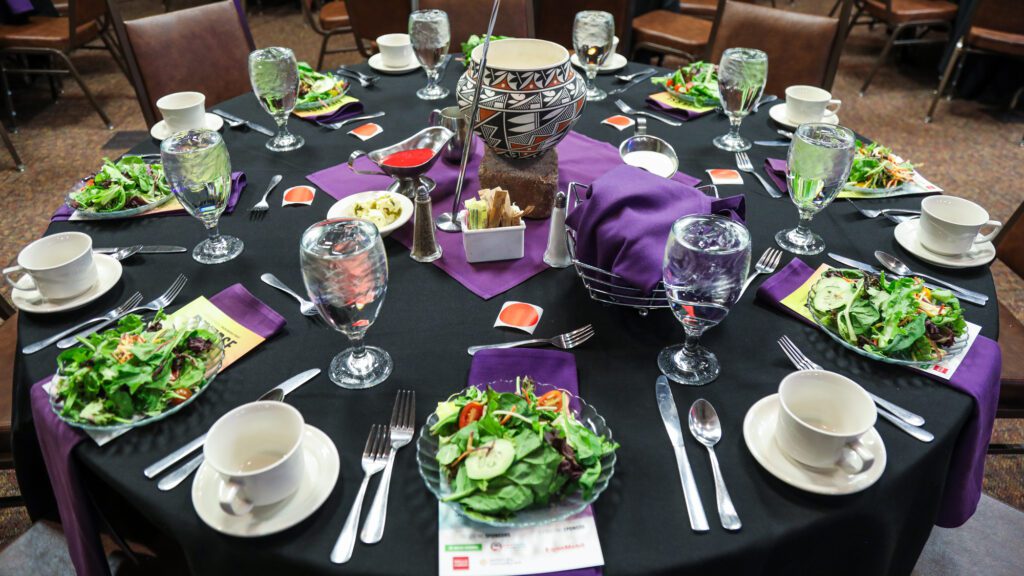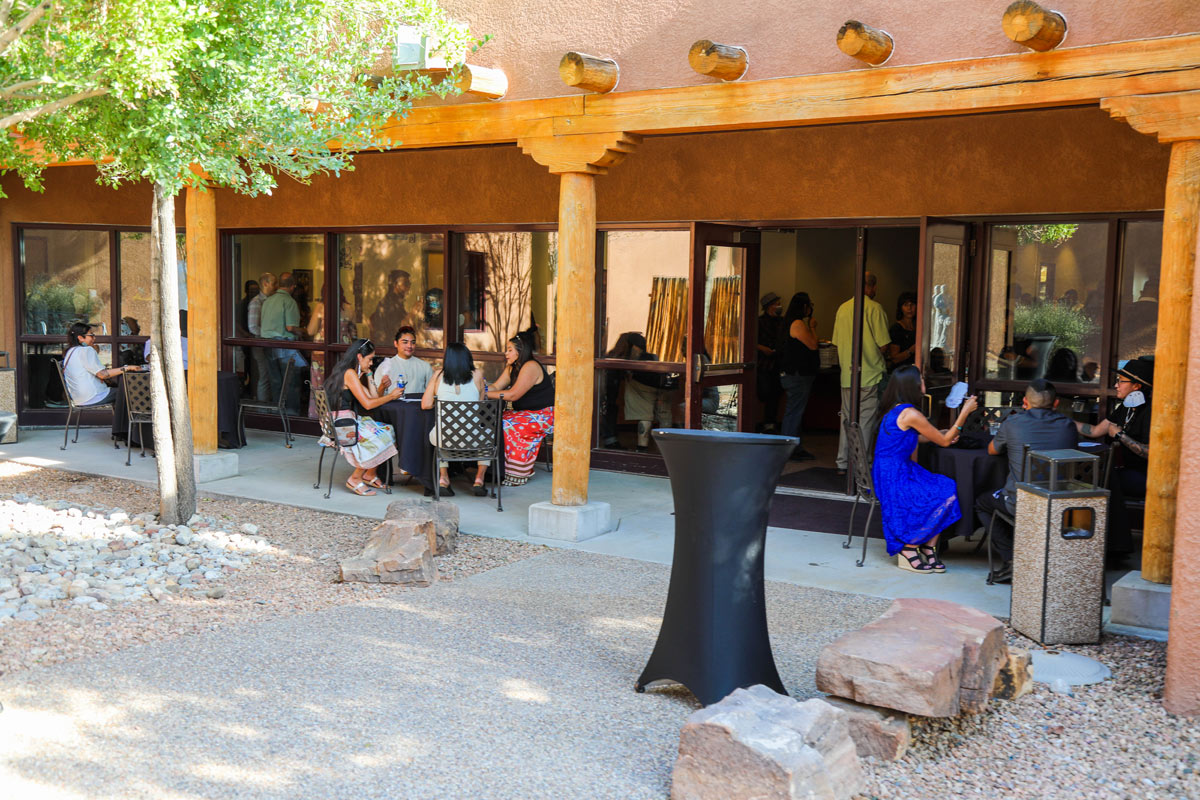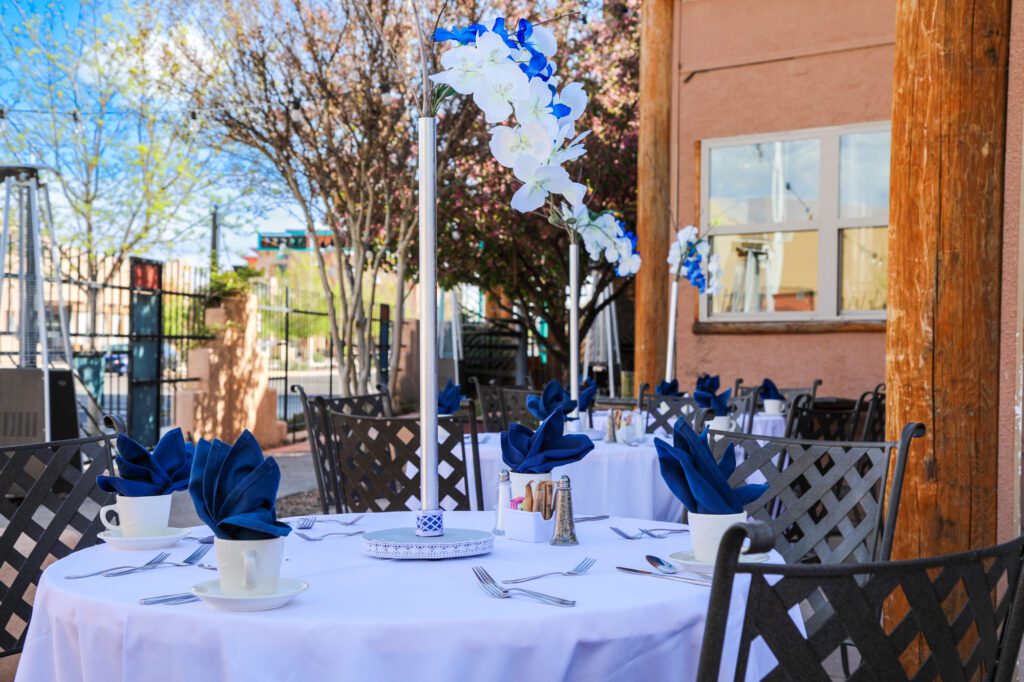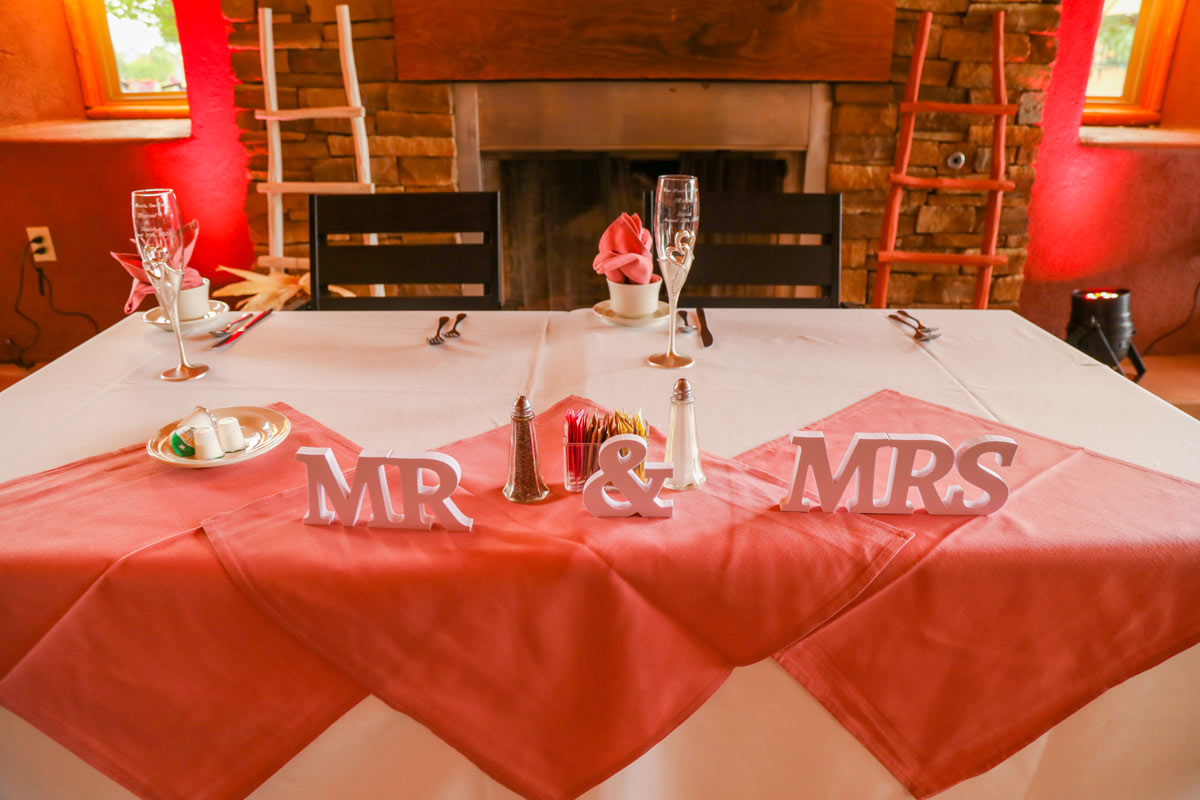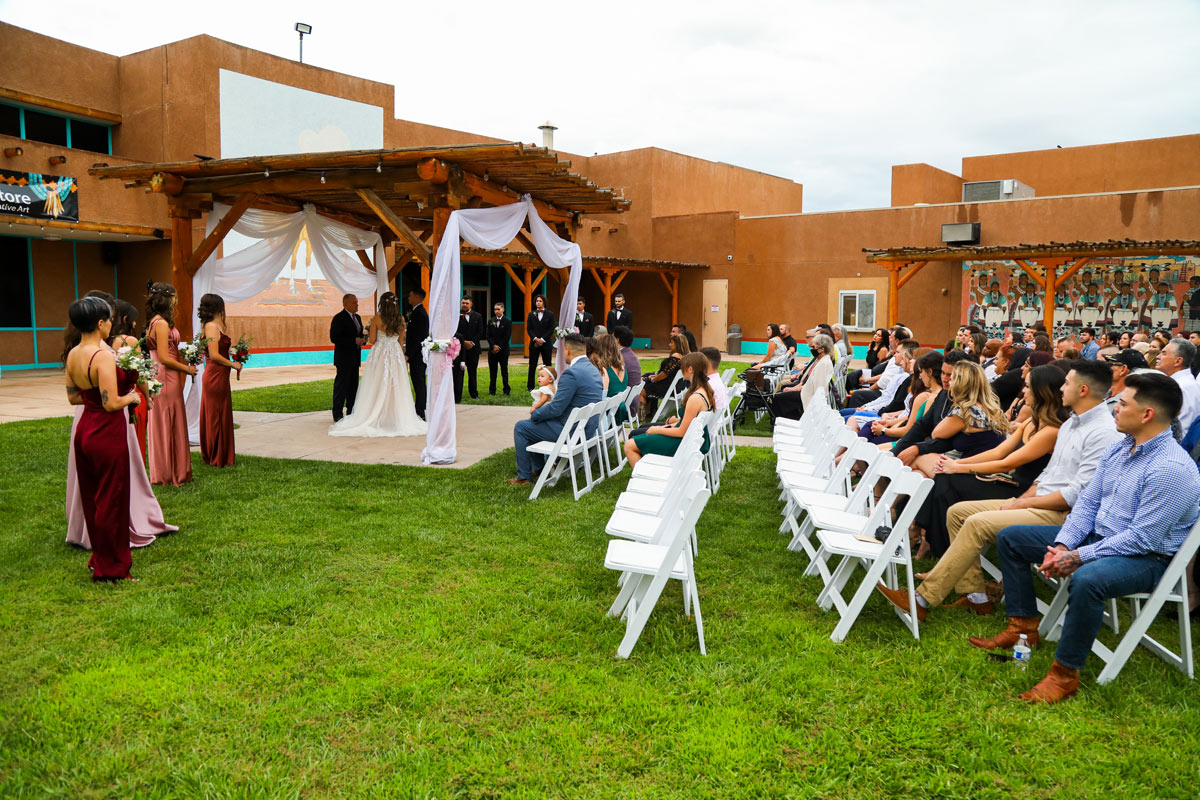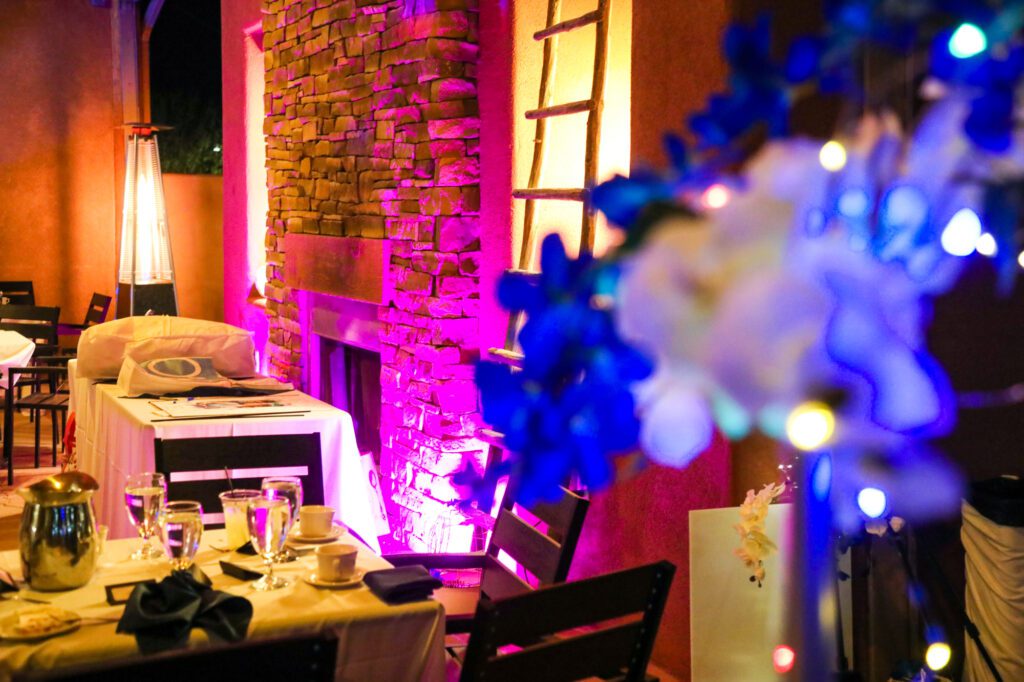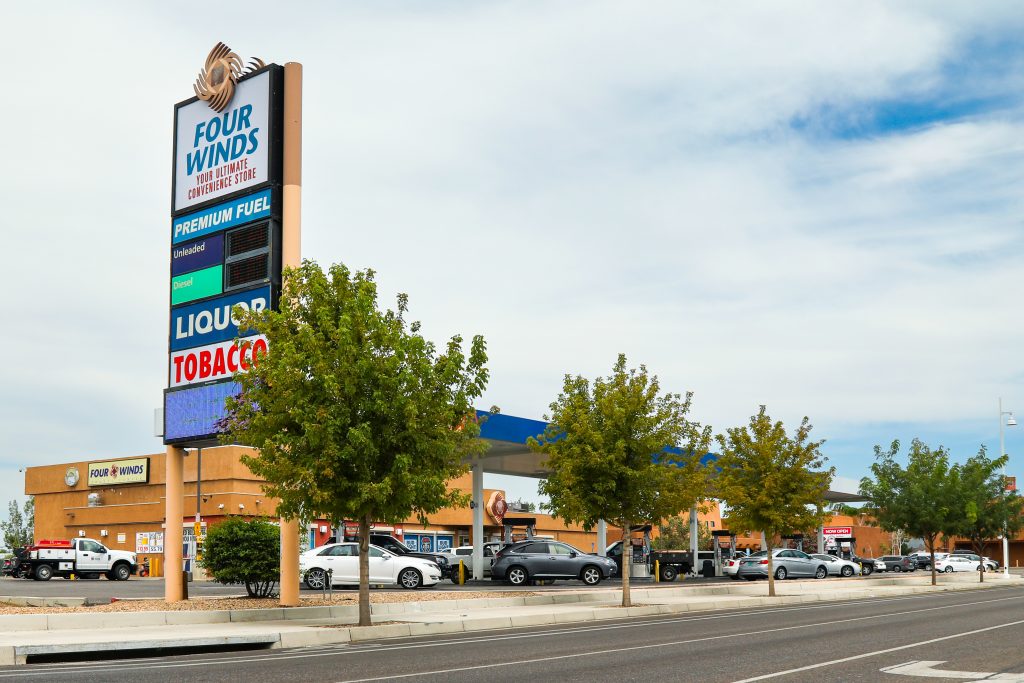FAQs
General FAQs
Each of the 19 Pueblos is an individual, federally recognized tribe located in New Mexico. Learn more about the 19 Pueblos.
Yes, we are entirely owned and operated by the 19 Pueblo tribes of New Mexico.
Avanyu (Tewa meaning “water serpent”) is commonly depicted on San Ildefonso and Santa Clara Pueblo pottery. The Avanyu symbolizes the importance of water to indigenous desert cultures. This symbol is also associated with lightning as shown by the serpent’s tongue. The upper semicircular portion of the logo represents eagle feathers. The smaller enclosed and crosshatched semicircle is also a rain symbol. The crosshatching represents rain and the upward-directed semicircle is a traditional cloud symbol. Stella Teller of Isleta Pueblo designed the logo for the Indian Pueblo Cultural Center in 1978. The logo copyright belongs to IPCC and may not be used for other purposes.
Indian Pueblo Store is Native-owned, and has been a trusted source of handcrafted Native art for more than 40 years.
Indian Pueblo Store has created a Guide to Authentic Native American Art that is an invaluable resource for learning more about traditional Pueblo and Native American art forms.
The Indian Pueblo Cultural Center welcomes Pueblo and Native American artists to our center almost every day of the year. These artists sell directly to our visitors and often demonstrate their craft. In addition, Indian Pueblo Store and IPCC host dozens of artist demonstrations throughout the year. For more information, see our Events Calendar. You can also see artists demonstrating their work by visiting a pueblo. Learn more about visiting a pueblo.
We recommend taking your artwork to a certified appraiser specializing in Native American arts and crafts to properly appraise and determine the value. The Indian Pueblo Cultural Center and Indian Pueblo Store do not perform appraisals; however, our staff at Indian Pueblo Store can provide a list of local Native American art appraisers upon request. Please call (505) 724-3506.
Sweat lodges are not part of Pueblo culture, and we do not provide information about participating in one. Please keep in mind that these are sacred ceremonies with specific spiritual meaning for certain tribes and should be approached with respect and extreme sensitivity. Please also note that most are held by invitation only, and are not open to the public.
CIBs are official documents issued by an individual tribe. First contact your tribal office directly to see if you are eligible for enrollment in the tribe. Learn more about the process of obtaining a CIB from the Bureau of Indian Affairs.
The Bureau of Indian Affairs provides information about tracing your Native American ancestry. If you would like to learn more about a specific tribe, please contact that tribe directly. We also encourage you to browse our collection of books at Indian Pueblo Store, as well as the Indian Pueblo Cultural Center’s Library & Archives, where you will find a wealth of information about Native American history.
No. We do not receive annual funding from casinos or gaming. The Indian Pueblo Cultural Center is a 501(c)(3) nonprofit organization that depends upon charitable donations, memberships, and fundraising events to advance our mission to preserve and perpetuate Pueblo culture. Learn more about how you can contribute to our mission.
No, we no longer offer a community service program; however, we do have volunteer and intern programs. Learn more.
Please visit the American Indian Graduate Center and American Indian College Fund for more information.
The symbol on the New Mexico state flag is the sacred Zia sun symbol. It represents the four directions, four parts of a day, four stages of life, and the four seasons. The circle binds all the elements together.
No. As an organization whose mission is to preserve and perpetuate Pueblo culture and serve our Pueblo communities, we are proud of our ability to provide jobs and career opportunities for Native Americans. While we are an Equal Opportunity Employer, we do offer Native American preference.
Our museum team offers many programs for children of all ages, including art and literacy programs, and our annual Youth Summer Camp.
Pueblo History and Culture FAQs
A pueblo is a tribal nation; a body of land under a tribal governmental structure; and a community made up of related people who have similar beliefs, spirituality, and lifestyle.
There are 19 pueblos in the state of New Mexico: Acoma, Cochiti, Isleta, Jemez, Laguna, Nambé, Picuris, Pojoaque, Sandia, San Felipe, San Ildefonso, Ohkay Owingeh, Santa Ana, Santa Clara, Santo Domingo, Taos, Tesuque, Zia, and Zuni.
There are three language families: Keresan, Tanoan, and Zunian. There are five recognized language dialects: Zunian, Keresan, Tiwa, Towa, and Tewa.
Zuni Pueblo has the largest population with about 8,200 people. Pojoaque has the smallest population with about 150 people.
There are 22 tribes in the state of New Mexico: 19 Pueblo tribes, plus the Navajo (Diné), Jicarilla Apache, and Mescalero Apache tribes.
Yes, most pueblos are open to the public during their annual feast days and celebrations. For more information, see our calendar of Pueblo feast days.
A feast day celebrates an important date in the life of a pueblo’s patron saint. On these days the community comes together to take part in dances, ceremonial meals, and prayer.
Pueblo communities celebrate seasonal cycles through prayer, song, and dance. These dances connect us to our ancestors, community, and traditions, while honoring gifts from our Creator. They ensure that life continues and that connections to the past and future are reinforced. Learn more about traditional Pueblo dance, and when you can see a cultural dance at the Indian Pueblo Cultural Center.
The Hopi people are closely related to the New Mexico pueblos, most closely to Zuni. Hopi is located in northeastern Arizona. Hopi and Pueblo people share similar beliefs, but among villages there is variation in the time and nature of dances.
Pueblo dance areas are known as plazas, and are built as central spaces between housing structures. These plazas are left uncovered so Pueblo dancers retain the connection with nature necessary for Pueblo spirituality. Dances are held on feast days and during other celebrations.
The Three Sisters are corn, beans, and squash. Traditional Pueblo agriculture and cuisine are rooted in these three crops. Together, these three foods create a perfectly balanced diet, and are also an efficient farming system. Corn provides a stalk for the beans to grow upon, while beans provide the nitrogen that is necessary for a successful corn crop, and protein in our diet. Squash creates ground cover the protects the corn and beans from pests. Corn and beans were dried to provide a healthy, balanced meal year-round.
A clan system is a family system which includes relatives from the mother’s and father’s bloodlines, and a structural system which divides people according to the season in which they are born.
The Pueblo Revolt of 1680 was a revolution against Spanish religious, economic, and political institutions imposed upon the pueblos. It is the only successful native uprising against a colonizing power in North America, and resulted in the removal of Spanish from Pueblo lands for more than a decade. The Pueblo Revolt helped ensure the survival of Pueblo cultural traditions, land, language, religion, and sovereignty.
Traditional Pueblo art forms include weaving, pottery, drum-making, jewelry, and beadwork. Today there are Pueblo artists creating traditional and contemporary work in all genres. Learn more about Pueblo art forms.







